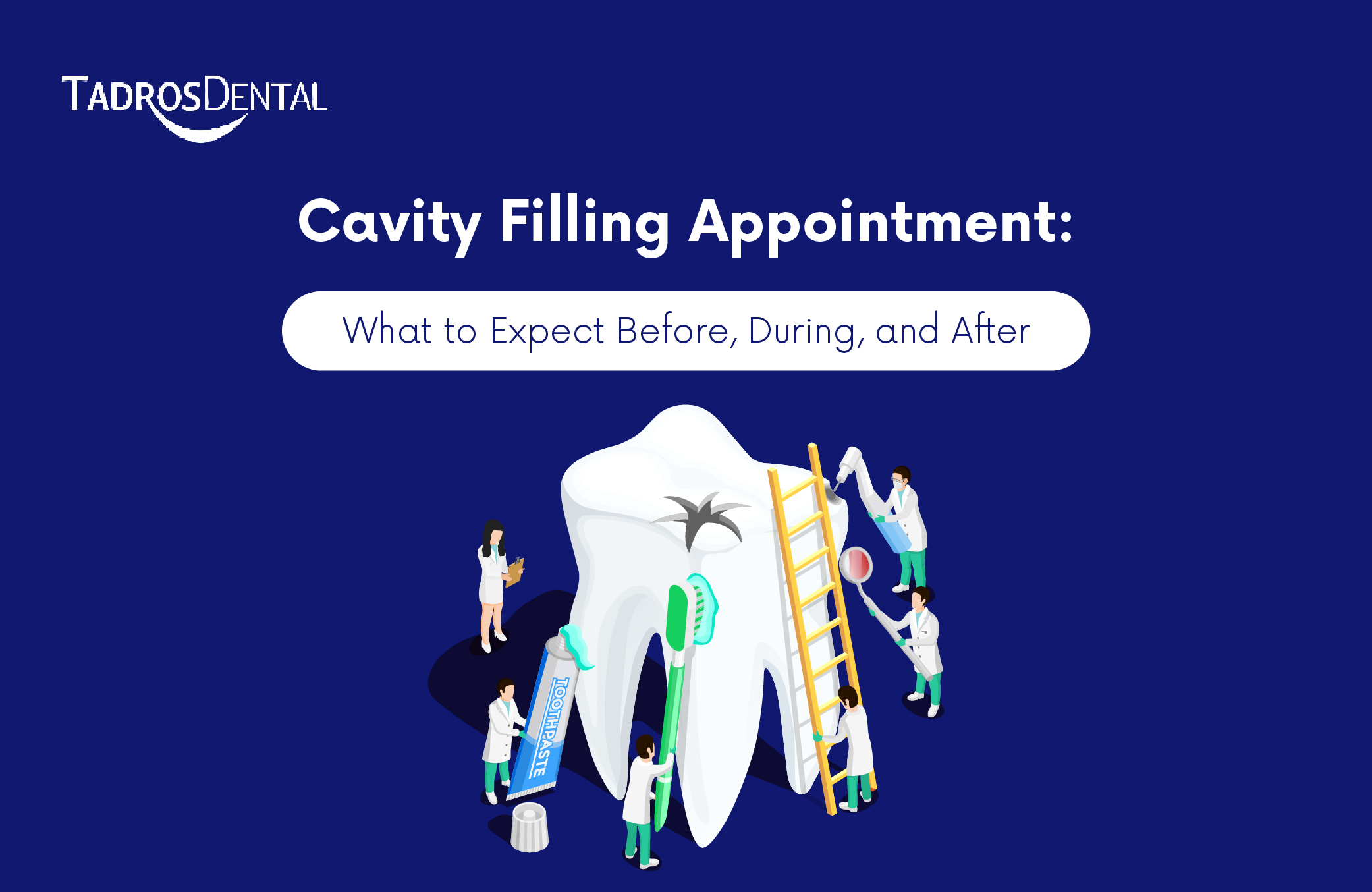
A cavity filling appointment is essential because nearly 90% of adults in America experience dental cavities. Cavities, or dental caries, are extremely common but, if neglected, can lead to severe pain, infection, and even tooth loss. Cavity filling is a simple yet effective dental procedure that prevents further tooth deterioration and restores functionality, helping to maintain overall oral health.
Every year, more than 175 million patients in the United States receive cavity fillings through the placement of treatments, according to reports by the American Dental Association (ADA).
It's a safe treatment, and you should feel reassured. Many patients experience nervousness before their first cavity treatment, and it’s completely fine.
In this article, we’ve mentioned all essential information regarding the duration and aftercare of the procedure to help to understand your cavity treatment. We will provide complete information about your dental filling throughout your preparatory work, before your appointment, and aftercare.
Getting ready for cavity filling requires basic steps that should be done to guarantee a calm experience. You need to perform these actions before your scheduled appointment.
Note the appointment time and date correctly. Your paperwork completion should start when you arrive 10–15 minutes early, especially when this is your first visit to the dentist.
Inform your dentist about your dental anxiety because of discomfort during treatment or anxiety about discomfort. Sedation or numbing gels are available to help patients cope with the procedure based on their recommendations.
Before the procedure, you should eat a light meal because the anesthetic effect on your mouth will require food to avoid feeling hungry while healing. You should prevent consuming acidic or sugary foods since they might damage your teeth before receiving cavity treatment.
Having a sterilized mouth prevents bacterial transmission throughout the treatment period. The dental filling procedure starts with proper teeth preparation through prior dental hygiene practices, which include brushing together with flossing.
The knowledge about cavity-filling procedures reduces anxiety levels that people might experience. Here’s a breakdown of the process:
Before the local anesthetic requires administration the dentist will apply a topical anesthetic on the treatment area. Patients experience minimal or no discomfort during cavity treatment because of proper numbing procedures.
Following anesthesia application to the targeted area, the dentist will eliminate the decayed tooth parts with either a drill or a laser instrument. Your dentist must perform this step to stop bacterial spread, which ensures an effective dental filling can be achieved.
A complete cleaning follows decay removal as the dentist prepares the area by disinfecting it before the procedure is done. The cavity filling process requires a sterile foundation that results from this step.
During the procedure, the dentist will use dental filling material to close the cavity opening. The dental filling procedure requires various materials, such as:
Following placement of the dental filling, the dentist forms it into shape while also polishing the filling to achieve a matched appearance with surrounding teeth. During the examination, the dentist will request you to bite down to confirm alignment after which they might make required modifications.
The procedure itself needs equal attention to aftercare methods. Following this specific process helps both the healing and the preservation of your teeth.
After the dental procedure, the painful sensations will gradually disappear throughout several hours of recovery time. Proceed with caution by waiting for numbness to fade away to prevent both burns and unintentional biting on hard food items and sticky or hot substances.
The post-surgery period includes temporary sensitivity to heat and cold and sweet food flavors that lasts about three days. Ibuprofen, available over-the-counter will support you in managing discomfort.
A new cavity filling requires 24 hours of no hard or sticky food consumption for protection. The setting process of the filling becomes more stable when given this time and the risk of the filling moving out of position decreases.
Regular brushing, along with flossing,g serves as the main defense against both future cavity development and the preservation of the filled tooth. A soft-bristled toothbrush combined with non-abrasive toothpaste should be used to protect the sensitive area.
Speak with your dentist right away when dental filling discomfort remains severe your teeth swell or the filling becomes loose and misshapen. Additional evaluation should be considered when these warning signs appear.
| Filling Type | Pros | Cons |
| Composite Resin | Matches tooth color, strong | Can stain over time, less durable for molars |
| Amalgam (Silver) | Durable, cost-effective | Visible, may expand over time |
| Ceramic Fillings | Resistant to stains, durable | More expensive, requires more than one visit |
| Glass Ionomer | Releases fluoride, protects | Less durable, wears down faster |
To ensure that your cavity filling lasts as long as possible, follow these tips:
Over time, even the best dental filling may need to be replaced. Signs that indicate a replacement may be necessary include:
If one of these signs arises, you should set up an appointment with your dentist so that the dentist may assess the state of your filling.
A cavity filling constitutes one of the most common dental treatments to preserve oral wellness. Having advanced knowledge about the appointment process starting from before and continuing through the actual procedure until the aftermath, enhances your sense of preparedness. Regular practice of oral hygiene and dental checkup schedules helps maintain the lifespan of your cavity treatment. The basic steps you take will safeguard your teeth while maintaining your smiling beauty for multiple years.


Privacy Policy | Powered by Capline, a Top-Rated Solutions Provider for Dental Offices.